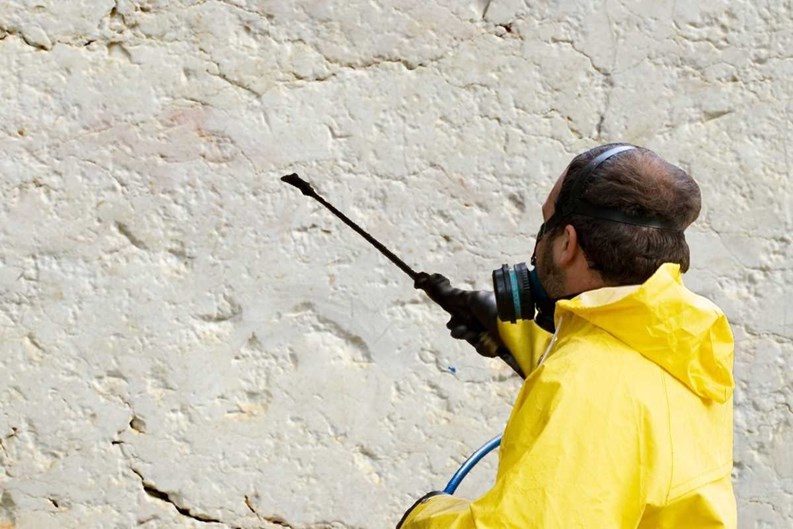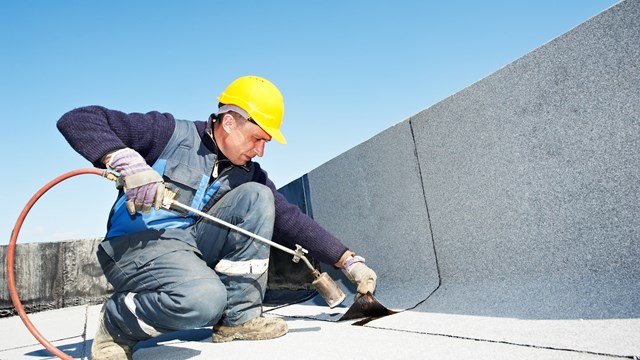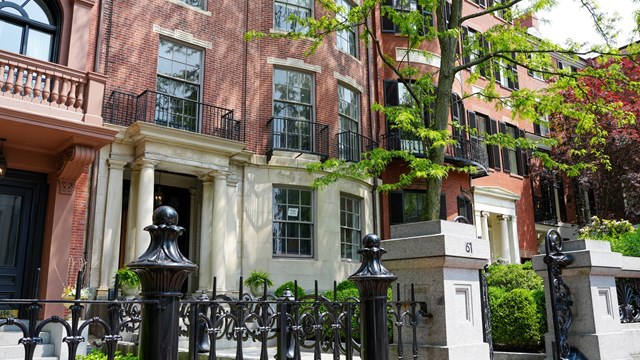Living in New England can be something of a dirty job. And the task of cleaning off months (or years) of accumulated grime and dirt from the exterior of a building takes much more than a scrub-brush and a bottle of Windex; it requires professional help. This is not just a labor-intensive job, it also calls for extensive knowledge of building materials, cleaning products, and cleaning methods.
Removing the Dirt
For residents of condos, townhomes and co-ops, knowing when, how and why—or why not — to have the exterior of their building cleaned could be a matter of dollars and cents, but it also should be about what makes common sense. Most associations would find it unnecessary to clean their building’s entire exterior each month, but some might want it done semi-annually, while others could allow the façade to darken for years before tending to it. It all really depends upon a community’s perceptions, needs, and budget.
Knowing the causes of exterior sediment and the cleaning methods used to deal with it can enable residents to take a realistic approach to the problem of keeping their building’s façade looking sharp. It’s hard to say what creates the most stains and grime on buildings: air pollution, soot from oil-burning furnaces, or car exhaust. Facades are soiled by atmospheric conditions like air pollution and acid rain, and the buildup of dirt on a building over time can dull architectural details and lessen the overall beauty of the structure.
“I would say moisture and humidity create the most stains and grime on New England buildings,” says Jim Pasternak, president of Northeast Power Washing in Marlborough, Connecticut. “You might read about a lot of companies that talk about air pollutants. I’ve heard people talk about exhaust from jets that come down and land on roofs. But what I find is that the sections of a house or a building that I clean, it’s the north side that is always dirtier because those sections get the least amount of sun. So when there is a rain or a morning dew, there is a moisture against the siding or the roof; it has longer periods of dwell time, which creates a better atmosphere for organic growth such as algae, mildew and mold.”
David Friedman, president of Insta-Brite Mobile Washing Inc. in Whitman, Massachusetts, agrees with Pasternak on what creates the most grime and stains on New England buildings. “The number one reason people need to clean their homes is because of the growth of mold and mildew,” he says. “And that’s on all types of siding, whether it be vinyl or painted or stained.”
“There are a number of factors. It all depends on where you live,” adds Kevin Palladino, president of Pals Power Washing Inc., in Southington, Connecticut. “First of all, there is dirt and exhaust from cars and motorcycles. If you are in an area where there is construction, there will be a lot of dust. Dust clings to vinyl siding and windows. It could be an area where trees are blocking the sun and when it rains the moisture is very present and that’s what the mold and mildew just thrive on. They thrive on a shady, dark, non-sun lit area.”
According to experts, graffiti is an issue of particular concern to urban dwellers, and requires a particular kind of expertise to get rid of. Generally, a pressure-washer is used in conjunction with chemicals to remove the paint and marker scrawl of graffiti on the exterior of a building. Graffiti may also be removed with specially-designed restoration paint strippers.
Aside from looking terrible, some long-term problems may be associated with letting dirt and grime accumulate on your building. That dirt can create a sealing barrier that won’t allow the building exterior to “breathe,” and thus, cause problems such as water retention. Also, calcium and sulfates left on a building facade create acidic conditions and salts which can penetrate and cause deterioration to the masonry and underlying materials.
“On siding, effects of the organic greenhouse build up on a home over a long period of time and can leave a silhouette of where the algae used to be,” says Pasternak. “In terms of roofs, you get a different spore of algae — most people call it mold or mildew — and it could turn to black algae.”
“On vinyl, there are really no long term issues,” says Friedman. “On painted or stained siding, the length of the paint job or the stain job will be extended if you maintain it by not allowing the mold or mildew to grow.”
“Long-term effects on a vinyl-sided home from dirt and grime build-up can lead to heavy oxidation,” says Palladino. “That leads to the paint chalking. If you look at a white aluminum-sided home that hasn’t been washed in years, you can see there’s brown marks under the eaves and you can actually see the silver of the aluminum. On a vinyl-sided home it actually fades the color.”
Other long-term problems of grime and staining of a building’s exterior include a less-favorable perception by residents and potential buyers of the state of the property. Curb appeal is a real factor that can have a major impact on a person’s decision to buy or not buy a unit in a building. A structure with a clean, sparkling exterior, bereft of black grime or copper stains from long-untended decorative cornices, will be more appealing to both residents who live in it and those considering buying into it. So, strictly speaking, not caring for a residential building’s exterior is like ignoring the value of each unit in that building, since ignoring the exterior will undoubtedly detract from values of the interior.
Cleaning Frequently
How often a building’s exterior should be cleaned varies, based upon a number of factors, including how long it’s been since the job was done, how well the job was done previously, what the façade is made of, the building’s budget and other considerations. For some communities, an exterior cleaning can be done in stages, with just the front façade being professionally cleaned on a regular basis, and the rest of the exterior getting the once-over less frequently.
Periodic cleaning of the building façade is recommended by professionals and will vary based on factors such as location of the building, exposure to atmospheric contaminants such as exhaust and other forms of pollutants along with acid rain, as well as the type of construction. Limestone, granite, brick and concrete are cleaned in different ways, depending upon the severity of grime and the cleaning methods chosen by the contractor.
Usually, contractors do an exterior cleaning from the top of the building to the ground floor. Sometimes the building’s board just asks for the front façade of the place to be cleaned, and that the other three sides of the exterior be left alone.
The frequency of cleanings also varies from brick to limestone to concrete. Softer materials such as limestone and some types of molded bricks can require more gentle cleaning methods, and contractors may forego restoration cleaners completely in favor of pure water soaking. This method involves the contractor attaching a soaking system to the building’s façade at the rooftop, then allowing the soaker to wet the façade of the building continuously in a very low-pressure spray for a day. After that, grime is easily power-washed off of the building’s exterior.
“I do hot-water washing. Hot water washing is a pressure washer with a back-end burner attached to it,” explains Palladino. “The burner heats the water up to 250 degrees. Hot water cleans so much nicer. It's like if you are cleaning your dishes or your clothes, hot water will do a better job than cold. So my customers call me about every four years. But if it's a cold water wash, I'd recommend a cleaning every two years.”
Generally speaking, contractors across the board use pretty much the same methods to clean buildings. Depending upon the job, varying combinations of high and low pressure water, detergents, strippers and acidic cleaners are used with spray bars and brushing to achieve the desired effect. But you cannot tell how it will all turn out unless you test your method first.
The processes and products used to clean building exteriors have changed a lot over the years, and now the chemicals used are far less caustic than in years past. While cleaning chemicals in the past would leave streaks on windows they came into contact with, newer chemicals will not.
“The green movement has impacted the cleaning materials used to clean buildings,” says Friedman. “But we find the most effective method is using a small, diluted amount of good old-fashioned bleach. It's not harmful when used that way. It's extremely effective and not harmful if used appropriately, similar to when you clean your clothes.”
How much it costs to get your building cleaned depends on the type of building façade being cleaned and the severity and type of contamination. Cost is also influenced by factors such as what types of scaffolding and site protection are required, as well as protection of adjacent surfaces such as windows and metal work.
To keep at least the ground floor of the building’s exterior looking its best between professional scrubbings, the staff should power-wash the exterior at least once a month. Some buildings have such a quick cleaning done more often.
Industry experts contacted for this article all agreed that picking the right contractor is one of the most important aspects of undertaking an exterior cleaning of a residential building. A board should carefully vet contractors before hiring them, and make sure the company being considered has done the same kind of work for other clients. Then the board should check how well that work was done.
Finally, the board should check the contractor’s insurance papers for the work to be done on the building—or have the building’s attorney eyeball the papers—to ensure that the insurance covers everything that it should. If it doesn’t and things go wrong with the job, the building’s residents could be left holding the bag.
Jonathan Barnes is a freelance writer and regular contributor to New England Condominium. Staff writer Christy Smith-Sloman also contributed to this article.







Leave a Comment